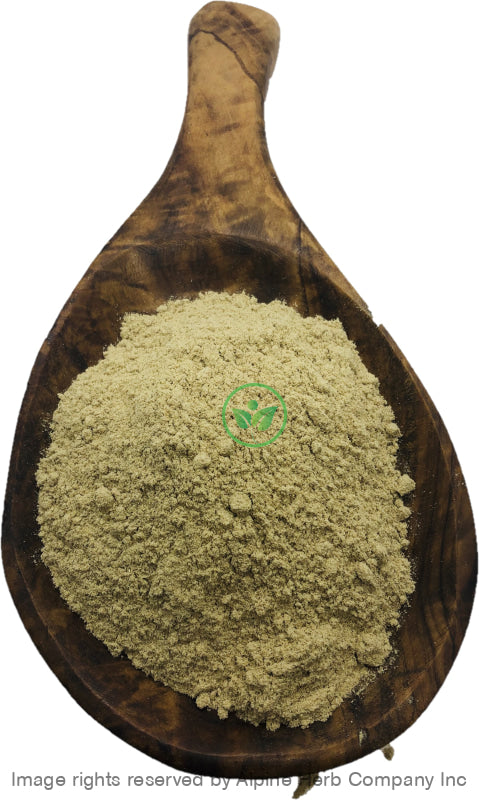Marshmallow Root Powder Alpine Herb Company Inc.
$ 9,99 $ 5,99
Botanical Name: Althaea officinalis
Common Name:
- English: Marshmallow, Mallow Leaves, Hollyhock
- Also, known as: Altea, altee, althea, Bardul khatmi, Benefischi, Bismalva-hibiscus, Blanca malva, Bon visclo, Bourdon de St Jacques, Eibisch, Eibischwurzel, Erva molle, Guimauve, Heilwurz, Hobbiza, Ibischwurz, Khairi, khatmi, Korzén prawóslazu, Marshmal, Malvaccioniu, Malvavisco, Marmolone molotta, Moorish mallow, Orvosiziliz gyökér, Racine d’althée, Racine de guimauve, Sammetpappel, Sauvage, Schleimwurzel, suzmool, Sweet weed, White mallow, Wymote, Gul-Khairu, K’uei, Malve, Malvavisce, Mallards, Mauls, Schloss Tea, Cheeses, Mortification Root/ Leaves, Shemai-tutti, Aslua Khitmi, Reshah-e-Khatmi
- Unani: Khatmi
Habitat: Western Asia & Europe
Origin: Poland
Harvested: Cultivated
Parts Used: Root
General Information:
Althaea officinalis, perennial herb with erect, woody stems, 60–120 cm high. Leaves alternate, ovate to slightly cordate, serrate, velvety, large, occasionally 3-lobed. Flowers pale pink, axillary, the calyx of each surrounded by a 6–9 cleft involucre. The stems, which die down in the autumn, are erect, 3 to 4 feet high, simple, or putting out only a few lateral branches. The leaves, shortly petiole, are roundish, ovate-cordate, 2 to 3 inches long, and about 11 inches broad, entire or three to five lobed, irregularly toothed at the margin, and thick. They are soft and velvety on both sides, due to a dense covering of stellate hairs. The flowers are shaped like those of the common Mallow, but are smaller and of a pale color, and are either axillary, or in panicles, more often the latter. The stamens are united into a tube, the anthers, kidney-shaped and one-celled. The flowers are in bloom during August and September, and are followed, as in other species of this order, by the flat, round fruit called popularly ‘cheeses.’
Roots are obtained from commercially cultivated plants that are at least 2 years old and harvested in the autumn. Marshmallow is listed by the Council of Europe as a natural source of food flavoring. This category indicates that marshmallow can be added to foodstuffs in small quantities, with a possible limitation of an active principle as yet unspecified in the final product. Previously in the USA, marshmallow has been approved for use in foods.
How to use:
Powdered Herb:
There are different ways to use powdered herb.
Food Preparation: You can add powdered herb to any super food herbal smoothie, sauces, spreads and even cookies. Also for children, you can mix powdered herb with honey or glycerin to make paste. The thicker the paste, the more potent and herbal in taste. The sweet taste of honey and glycerin will help medicine go down. This method is also known as “Electuaries”.
Capsules: Encapsulating your own powdered herb at home, gives you assurance that the contents of the capsules are pure herb and no filler or any other products. These capsules can be taken with liquid.
Poultice: Poultice can be made with an herbal powder and liquid (mostly water) to form a paste which is then applied to the skin. This method is very helpful for skin conditions.
Herbal shot: Powdered herb can be mixed with water, fruit juice or other liquid to make herbal shot.
Precautions:
You should consult with a qualified healthcare practitioner before using any herbal products, particularly if you are pregnant, nursing, or on any medications.
All information on this website is for educational purpose ONLY
This information has not been evaluated by Health Canada.
This information is not intended to diagnose, treat, cure, or prevent any disease.
| Unit Size | 100g, 200g, 400g, 1kg |
|---|
Prompt shipping and expert packing
Thanks to our longstanding association with UPS FedEx DHL as well as other leading global carriers, we can offer a variety shipping options. Our warehouse staff is highly trained and will be able to pack your goods in accordance with our precise and exact specifications. Your items will go through an exhaustive examination before they will be securely packaged before being delivered. We ship to hundreds of thousands of customers daily in different countries. This is a sign of our determination to become the largest online retailer worldwide. Warehouses and distribution centers are located throughout Europe as well as in the USA.
Note that orders containing multiple items are processed according to the particular item.
We will thoroughly inspect all items ordered before shipping. Most orders are shipped within 48 hours. The delivery time will be between 3 and 7 working days.
Returns
The stock market is always changing. It's not entirely managed by us since we're involved with several entities, including the factory and the storage. Therefore, the actual inventory could fluctuate at any moment. Please be aware that it is possible that your order could be out of stock after you've placed your order.
Our policy lasts for 30 days. If it's been more than 30 days since the date you purchased your item We're sorry to say that we can't offer you a full exchange or refund.
You can only return a product if it is unused and still in the same state as when you received it. The item should be in the original packaging.
Related products
Herb Powder
Herb Powder
Herb Powder
Herb Powder
Herb Powder
Herb Powder
Herb Powder
Herb Powder
Herb Powder
Herb Powder
Herb Powder
Herb Powder
Herb Powder
Herb Powder
Herb Powder
Herb Powder
Herb Powder


































